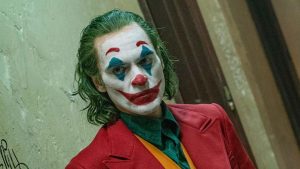(From Romero to Phoenix)
To start in this article we will be looking at the Joker’s portrayal on the silver screen, so with all respect to the legendary vocal actor “Mark Hamill” but he won’t make the cut. Also we won’t be taking in consideration Jared Lato’s Portrayal of the Joker in 2016’s Suicide Squad because of his limited screen time in the movie. The iconic DC villain was first portrayed on the big Screen by “Cesar Romero” in the 1966 “Batman” Film and later in ABC’s Batman Live Action Series from 1966 to 1968. Romero’s Joker was a goofball and giggly prankster with off the top body movements and hilarious speech, a long way far from the Joker we know nowadays.
To understand Romero’s portrayal of the Gotham clown prince of crime, we have to look at the actor’s acting background and the film industry conventions of 1960’s. Cesar Romero grew up as a dancer/actor in Musical theatre and for that he was used to implementing every part of his body to express himself on the screen. he adapted the Joker persona to fit his acting style and the acting school of that time. He was comedic tiptoeing instead of walking, bulging his eyes instead of looking around. All in all we can say that Romero was having a lot of fun playing his role of Batman’s arch nemesis. The film conventions of the 1960’s have played a major role in the depiction of the joker at the time for example the focus on long shots, camera pans and reliance on a wide and wide-to-medium shots because it simply didn’t require that much change in lighting. The intense focus on the actors and set design left Romero with nowhere to hide. His full body was displayed on the screen, and that’s why the actor had to fill the scenes with body movements and facial expressions to contrast with the bright colors and high saturation which gave the role a more goofy aspect and whacky behavior. On another hand the 1966 Movie and TV series had a high average shot length up to 10 seconds per shot which means that Romero couldn’t stay static for too long hens the over exaggerated movements. Correspondent with the comic books golden age depiction of the joker: a more playful criminal than a psychotic agent of chaos of our modern era.
The next to take on the role of the villain in a purple suit is “Jack Nicholson” in the 1989 “Tim Burton” cinematic adaptation of the caped crusader (Batman). Same as with Romero’s Joker portrayal, we have to take a look at Nicholson’s acting background: Jack Nicholson came into the acting world in 1950’s in the midst of the crossroads of acting traditions. With the end of the actor’s brand being highly controlled by the studio system, forcing the actor to play similar roles in order to reinforce that set brand. New Hollywood at the time rose with the concept of method acting that see actors improvising and immersing themselves in the roles that they play. We see this coalition of the two acting schools in Nicholson’s portrayal of the joker as he was so true to the cartoon version of the joker and even co-wrote the joker’s dialogue, mixing his acting persona with the role he was playing. The 1989 Joker portrayal gave us a more smooth and scary version of the character. A true depiction of the clown prince of crime: with silly gadgets inflecting heinous deaths, a financial gain driving his criminal actions and a relatable motive to wanting revenge on Gotham’s dark vigilante. The cinematography and “Tim Burton’s” direction of the picture also affected the portrayal of the joker: Nicholson was filmed in close up and medium shot’s limiting his acting to his upper body movement’s mainly his face and hand gestures. We can mainly see that in his introductory scene where he steps out of the shadows pointing a gun while the camera slowly zooms in a low-angle close up view of his white painted face, adding a more theatrical and menacing aspect to his reveal as a villain. Also in traditional “Tim Burton” fashion of a dark atmosphere and moody lighting scheme meant that the white painted face of Nicholson was the center of his performance and the scenes he was in.
As “Jack Nicholson’s” reveal in the 1966 “Batman” showed the audience his transformation into a more serious and dark villain than the first Joker, the late “Heath Ledger’s” reveal as the Joker in “Christopher Nolan’s” “Dark knight” was a terrifying close up shot of his face directly looking at the camera, cementing him as a terrifying and psychotic depiction of the purple suited villain. The close up shot highlighted the scars on the Joker’s face; the empty threatening look in his eyes and the smeared white make up immediately created a mysterious and intimidating atmosphere around the character. Ledger had a unique style of acting, he wasn’t schooled as an actor and relied much on instinct and improvise to immerse himself in the role. The young actor impersonated the role on more than the psychological scale, embodying the joker’s psychotic personality to deliver the whole emotional journey through a short, tight shot. The new Hollywood film conventions of a faster editing and closer shot’s meant Ledger had only a brief window of time to portray the whole methodically insane persona of the Joker. it’s agreed upon that the late actor created the most memorable and critically acclaimed portrayal of the clown prince of crime with a post mortem Oscar to prove it. “Heath Ledger” used every muscle in his face to play this role, he shifted the character’s emotions from anger to paranoia, sadness and pain to joy and cheerfulness with just a flick of the tongue or a twitch of an eye. The young actor used every fluctuation in his vocal-cords to convey the instability and unpredictability of the character he’s playing, shifting his voice from a monotone sound to comically ventriloquist inspired voice. Ledger used the intimate close-up shot’s to directly intimidate us as the audience and relating to the anarchist in all of us. He treated the joker not only as a villainous character to the Dark Knight(Batman) but as a symbol we might stand behind, an agent of chaos, a man outside the law , an insane individual who made more sense than the sane world around him.
Skipping over the “Jared Lato” portrayal in the 2016’s Suicide squad all the way to The 2019 origin story movie, conveniently named ”Joker”, where the clown themed criminal was played by “Joaquin Phoenix”. The actor paid homage to the previous iterations of the psychotic clown incorporating every aspect of the performances of his predecessors and mostly paid tribute his late friend “Heath Ledger”. He Transformed the Joker yet again from a psychotic nihilist to a more relatable tormented soul and gave a motive beyond the insanity. He is utilizing every aspect of the cinematography to deliver the emotional struggle of his character with contrasting the cold color-rich background with the joker’s famous purple suite. The camera zooms in on the actor’s weird physical appearance to relate it with his scared psyche. Phoenix’s take on the famous Joker laugh is so unique, he took the maniacal laugh of the Ledger’ Joker and turned it into a scream for help as with every time he starts to laugh, the camera focuses on his aching body movements and the pain in his eyes. The joker’s role is evolving each time with the film convention of the time and the actor’s take on it: as when Romero gave the clown prince of crime life in 1966, Nicholson gave him a style and made him more than a one-dimensional villain, Ledger Gave the joker more depth and cemented him as one of fiction’s greatest antagonists and finally Phoenix transformed the killer clown into a tormented anti-hero, someone we can sympathies with even if we are terrified by him.
Written By: Ahmed Ghram

